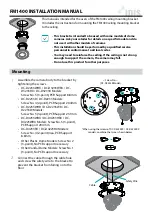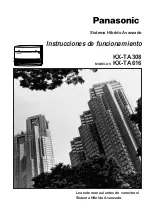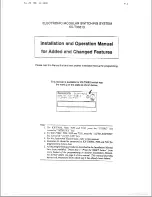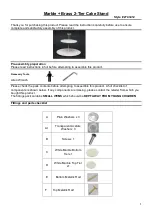
249W Level Sensor
Instruction Manual
Form 5729
May 2006
2
W8150 / IL
CONTROLLER OR TRANSMITTER
(TYPE DLC3010 SHOWN)
RETAINING
FLANGE
POSITIONING
PLATE
GASKET
TORQUE TUBE
ARM
ROTARY SHAFT
OUTER
TUBE
END
MOUNTING HOLES ACCEPT
FOUR STUDS OR CAP
SCREWS DEPENDING ON
CONTROLLER OR TRANSMITTER
HEX NUTS OR CAP SCREWS
DEPENDING ON CONTROLLER
OR TRANSMITTER
Figure 2. Torque Tube Arm Exploded View Showing Controller or Transmitter Mounting
The unconnected end of the tube is sealed by a
gasket and clamped rigidly to the torque tube arm,
permitting the protruding end of the shaft to twist and
therefore transmit rotary motion. This allows the
interior of the torque tube to remain at atmospheric
pressure, thus eliminating packing and the
disadvantages of packing friction.
The displacer always exerts a downward force on
one end of the displacer rod. The other end of the
displacer rod rests on the knife-edge of the driver
bearing. A keyed shaft on the bearing end of the
displacer fits into a socket on the outside of the
welded end of the torque tube assembly.
A change in liquid level, interface level, or
density/specific gravity buoys up the displacer by a
force equal to the weight of the liquid displaced.
Corresponding vertical movement of the displacer
results in angular movement of the displacer rod
around the knife edge. Since the torque tube
assembly is a torsional spring which supports the
displacer and determines the amount of movement
of the displacer rod for a given displacement
change, it will twist a specific amount for each
increment of buoyancy change. This rotation is
brought through the torque tube arm by the
protruding rotary shaft. A controller or transmitter
attached to the end of the rotary shaft converts the
rotary motion into varying pneumatic or electric
signals. Figure 2 shows how the controller or
transmitter mounts on the torque tube arm.
Unless otherwise noted, all NACE references are to
NACE MR0175
−
2002.
KNIFE EDGE
BEARING
DISPLACER ROD
W1800-1*/IL
W8325
DISPLACER
TORQUE TUBE
Figure 3. Typical Cageless Displacer
Type Number Description
D
Type 249W
—3- or 4-inch, ANSI Class 150,
300, 600 steel cageless sensor.
The Parts List section shows some Type 249W
constructions, standard displacer lengths, and
standard materials, and table 1 contains materials of
construction. However, Type 249W parts are
available in a wide variety of materials of
construction, part dimensions, and other
specifications. Contact your Emerson Process
Management sales office for assistance in selection
of specific materials, dimensions, and specifications.





































